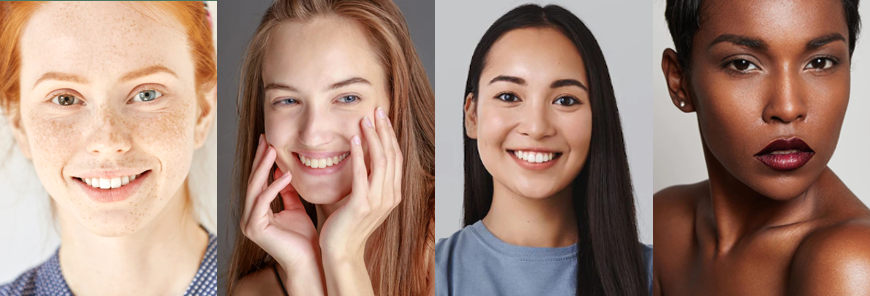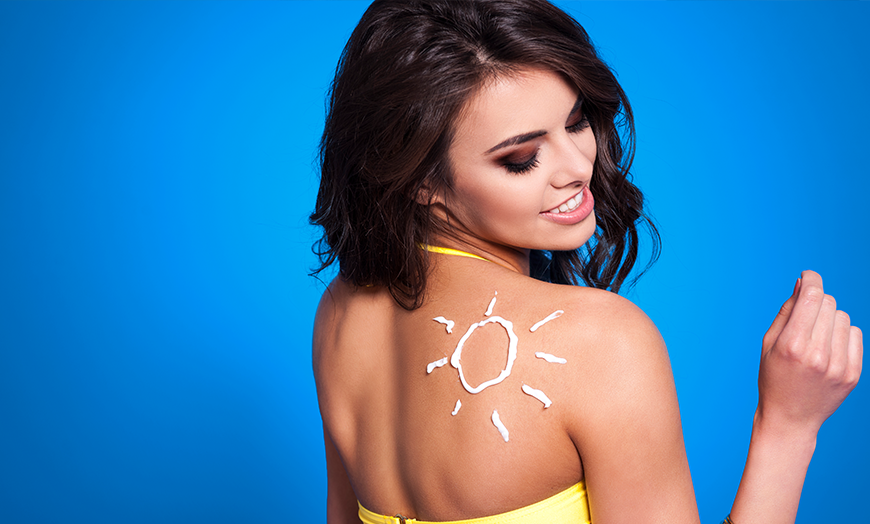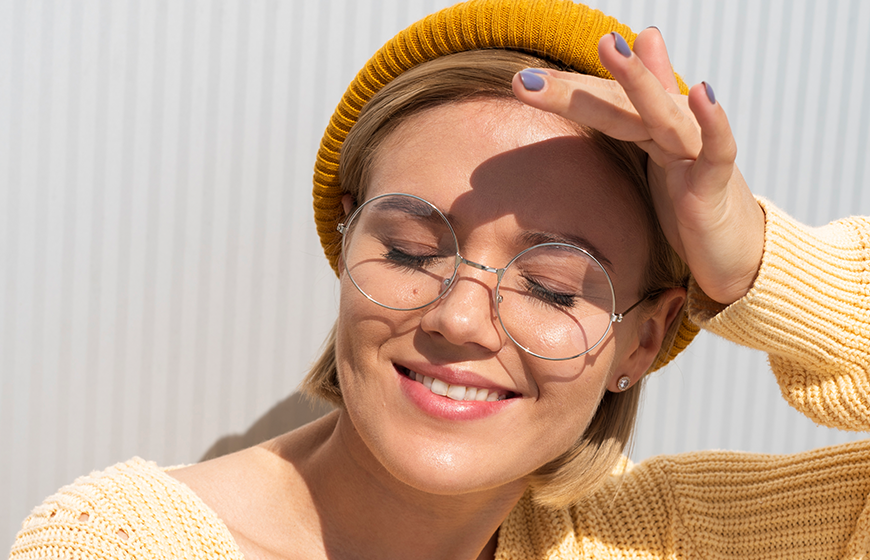- Skin Types
- What Is The Best Sunscreen For You?
- Factors To Consider When Selecting A Sunscreen
- Are Spf 50b and 30 better for your face?
- How Can I Identify My Skin Type?
- Can I Use Spf 50 every day?
Sunscreen is a year-round investment in our cosmetic routine. While spending time outside exposes the skin to the vagaries of UVA and UVB rays, even 15 minutes of exposure to the sun rays from windows can have an impact on your skin. Toning, masking, and essence are all optional in skincare. Wearing sunscreen, which is also likely the most disregarded component of skincare, is one crucial step that shouldn’t be debated.
Dermatologists, aestheticians, and skincare connoisseurs all agree that sunscreen is the single most critical product to include in your beauty routine. While applying sunscreen may appear simple enough, even a cursory investigation into the subject leads down a confusing rabbit hole of data. It’s a frequent fallacy that sunscreen should only be used during the summer or while one is outside during the day.
Before we get into the specifics of sunscreen for different skin types, it’s crucial to understand what makes up the sunshine. The visible light, infrared rays, and ultraviolet rays that makeup sunlight form a spectrum. UV photons only account for 5% of the sun’s total spectrum. Infrared and visible light, on the other hand, make up 45 percent and 50 percent, respectively, of the overall spectrum. UV rays produce tanning and contribute to the indications of aging, and they can also predispose skin cancer in Caucasian western cultures. The sun’s damaging rays need to be shielded from your skin. Sun protection is necessary all year, but it is more vital during the summer. Prolonged sun exposure can cause skin discoloration, age symptoms, and sunburns, so you should protect your skin. Skin cancer is also caused by excessive exposure to ultraviolet radiation. Using a high-SPF sunscreen cream or spray is the most effective way to protect your skin.
Furthermore, most sunscreens can absorb or reflect UVB rays, quantified by the SPF value (Sun Protective Factor). As a result, UVA, visible light, and infrared radiation continue to harm the skin. As a result, a sunscreen solution that can protect the skin from the entire solar spectrum is required. This comprises visible light, infrared radiation, and UVA radiation, all of which are measured using various indices.
It is therefore critical to choose sunscreens that contain the science of Full Radiation Technology to account for protection from a greater percentage of infrared and visible light. It protects skin from the harmful effects of the sun’s visible light, infrared, UVA, and UVB radiation cheval. While SPF (sun protection factor) is vital, it is advised SPF 30 is projected to enable 1/30 of the sun’s rays to pass through the skin, whilst SPF 50 is estimated to allow 1/50 of the sun’s rays to pass through the skin.
Skin Types


- Dry Skin.
- Oily Skin.
- Normal Skin.
- And Combination Skin.
There are four most prevalent skin types listed below:
What Is The Best Sunscreen For You?
Knowing your skin type is crucial since it allows you to understand how to care for it. The following are the most common skin types and their recommended sunscreens:
- Dry Skin
Complete hydration is necessary for dry skin. As a result, the best option for dry skin is to use a sunscreen with hydrating components. Choose a sunscreen that has an SPF of 30 to 50 and is cream or lotion-based. Not only will it protect your skin from the sun, but it will also make it softer and smoother. Dry skin is frequently well-suited to mineral and physical sunscreens. Any sunscreen that has moisturizing elements including ceramides, glycerin, hyaluronic acid, and honey is good. - Oily Skin
Even after washing your face, oily skin feels greasy and appears shiny. It indicates that your sebaceous glands are creating excessive amounts of sebum. Because your skin is already oily, you should use a chemical sunscreen that is non-greasy, light-weight, and matt-finish. Your skin pores may become clogged owing to excess oil if you apply a strong or greasy sunscreen. Green tea, tea tree oil, and niacinamide are some of the ingredients in sunscreen that might help you regulate your oil production. - Skin That Is Sensitive
Physical sunscreens with components like titanium dioxide and zinc oxide are recommended for people with sensitive skin. These
substances are gentler on the skin and will not cause any negative reactions. To avoid skin rashes and irritation, stay away from products containing parabens or oxybenzone. The safest bet is to go with a mineral sunscreen that contains zinc oxide and titanium dioxide. - Skin with Acne
Skin that is prone to acne can be a pain. Acne-prone people should use caution while selecting sunscreen. Physical sunscreens are often labeled as non-comedogenic [3,] indicating that they are specially prepared to prevent blocked pores. Avoid chemical sunscreens and harsh substances on your face. - Skin that is not oil cheval
Those who have normal skin and no skin issues can use any sunscreen that looks good on them. To avoid future skin irritation, it is always better to use physical sunscreens rather than chemical sunscreens.
Factors To Consider When Selecting A Sunscreen
Now that you know how to tell the difference between a physical and a chemical sunscreen, there are a few more things to think about before you go out and buy any. Sunscreen should have the following things:
➔ Have a minimum SPF of 30.
➔ UVA and UVB rays protection (broad-spectrum)
➔ It should be waterproof.
➔ Choose clothing that compliments your complexion.
Are Spf 50b and 30 better for your face?


What Does SPF Stand For?
The SPF number indicates how long it would take the sun’s UV rays to redden your skin if you used the product exactly as prescribed vs if you didn’t use any sunscreen at all. So, ideally, you’d take 30 times longer to burn with SPF 30 than if you weren’t wearing sunscreen.
About 3% of UVB rays can reach your skin via an SPF 30. Only approximately 2% of those rays pass through with an SPF of 50. That may seem insignificant until you consider that the SPF 30 allows 50% more UV rays to pass through your skin.
Under ideal conditions (such as in the lab), a sunscreen with a higher SPF and broad-spectrum coverage protects against sunburn, UVA damage, and DNA damage more effectively than comparable products with lower SPF values.
But life isn’t a laboratory. In practice, products with high SPFs frequently give the impression of safety. They encourage people to spend more time in the sun. They might not bother to reapply. They may also believe that they do not need to seek shade, wear a hat, or cover-up. They take a lot more UV damage as a result, which negates the purpose.
SPF 50 may not be enough for persons with a history or high risk of skin cancer, hereditary conditions such as albinism or xeroderma pigmentosum, or immunological disorders. The same is true in other situations, such as high-altitude climbing or skiing, or vacationing near the equator.
The Skin Cancer Foundation recommends applying a water-resistant broad-spectrum sunscreen with an SPF of 30 or higher for any extended outdoor activity. However, regardless of the SPF, use one ounce (two tablespoons) 30 minutes before going outside and reapply every two hours or after swimming or sweating.
Sunscreen Isn’t Enough
Sometimes you realize you’ve asked the wrong question when you ask it. “What is the best overall strategy for protecting my skin?” is perhaps a better question. The explanation is that high-SPF sunscreens should not be relied upon solely. There is no one-size-fits-all solution for sun protection. Sunscreen is only one component of a comprehensive plan that should also involve seeking shade and wearing protective clothing such as wide-brimmed hats and UV-blocking eyewear.
How Can I Identify My Skin Type?


If you desire healthy, perfect skin, you must first determine your skin type. Knowing your skin type will help you choose the proper products and create a skincare plan that is tailored to your needs. Dry, oily, combo, normal, acne-prone, and sensitive skin are the main skin types to consider. You may be wondering how you’ll ever tell the difference between all of these skin types! But don’t be concerned. There are a few easy techniques to figure out your skin type.
- Use a tissue to wipe your face. Wait an hour after washing your face before patting your T-zone with a tissue. Examine the tissue to see whether any oil has rubbed off. If it did, your skin is either oily or mixed.
The T-Zone consists of your forehead and nose. The T-zone is named from the bridge of your nose, which forms the base of a “T.” The top of the “T” is formed by the portion of your forehead above your brows. - Pay attention to how your skin feels. Your face will feel tight after scrubbing if you have dry skin, whereas oily skin will feel cleaner immediately away. If you have combination skin, your T-zone will feel clean, but your cheeks will feel tight. Certain cleansers might irritate sensitive skin and produce itching or a rash.
● If you have sensitive skin, certain facial products may cause your face to become red, itchy, or cause a rash.
● As the day progresses, oily skin will begin to feel greasy again.
● If your skin doesn’t fit into any of these categories and you don’t have any problem spots, you have typical skin that requires little upkeep! Congratulations!
● Pimples or acne can strike at any age, especially with oily skin. - Examine yourself in the mirror. You most likely have dry and/or sensitive skin if you notice red, flaky areas all over your face. You have oily skin if your face is slick all over. Combination skin is defined by the presence of both.
- Examine the size of your pores. Your pores will be noticeable but not huge if you have regular skin. Back a few feet away from the mirror. You have oily skin if you can still see your pores. You have dry skin if your pores are barely visible. When you have more than one pore size on your face, you have mixture skin, which is a mix of dry, oily, and normal skin.
- Pull your skin taut. You have dry or mixed skin if your skin creases quickly when pressure is applied. Skin that is oily will feel smooth.
Can I Use Spf 50 every day?


Most of us are aware of the significance of wearing sunscreen to minimize sunburn and damage during the summer months, but it should be a year-round health precaution. Regardless of your skin tone or color, use sunscreen. Since ancient Egypt, when rice bran extract and jasmine were utilized, sunscreen has been used to protect skin from the sun. The first commercial sunscreen was invented by chemists, and it has been improved upon ever since. Modern sunscreens are water-resistant and can be found in primers, foundations, serums, and creams, among other cosmetics and beauty products.
The following are the top five reasons why using sunscreen should be a year-round habit:
● It shields your skin from harmful UV rays: Our risk of solar damage from harmful UV rays has increased as the ozone layer
has been depleted. Sunscreen reduces the risk of sunburn by blocking these rays. Look for products with an SPF of at least 15 (some doctors recommend no less than 30), such as those from Goddess Garden, and use them every day. To cover your entire body, you’ll need about one ounce.
● It Reduces Your Skin Cancer Risk: In the United States, skin cancer is the most frequent type of cancer. The Centers for Disease Control and Prevention (CDC) reported that 71,943 people were diagnosed with cutaneous melanomas in 2013, with 9,394 instances being fatal. By using a sunscreen every day, you can reduce your risk of skin cancer by half.
● It prevents premature aging of the skin: UV rays promote photoaging, which is characterized by a thick, leathery
appearance, discoloration, and collagen breakdown, all of which lead to lines, sagging, and wrinkles. According to studies, people under the age of 55 who use sunscreen on a regular basis have a 24 percent lower risk of getting these indications of aging than those who don’t.
● It Aids in the Maintenance of an Even Skin Tone: Sunscreen aids in the maintenance of a smoother and more even skin tone by preventing discoloration and dark patches caused by UV damage.
● If your hair is red, your chances of getting skin cancer are higher: Scientists used to believe that redheads’ fair skin tone was to blame for their elevated risk. Researchers found the MC1R gene mutation in 2013, which causes red hair and pale skin. This mutation also establishes a cancer-causing pathway that promotes a genetic proclivity for cancer when exposed to UV radiation.
